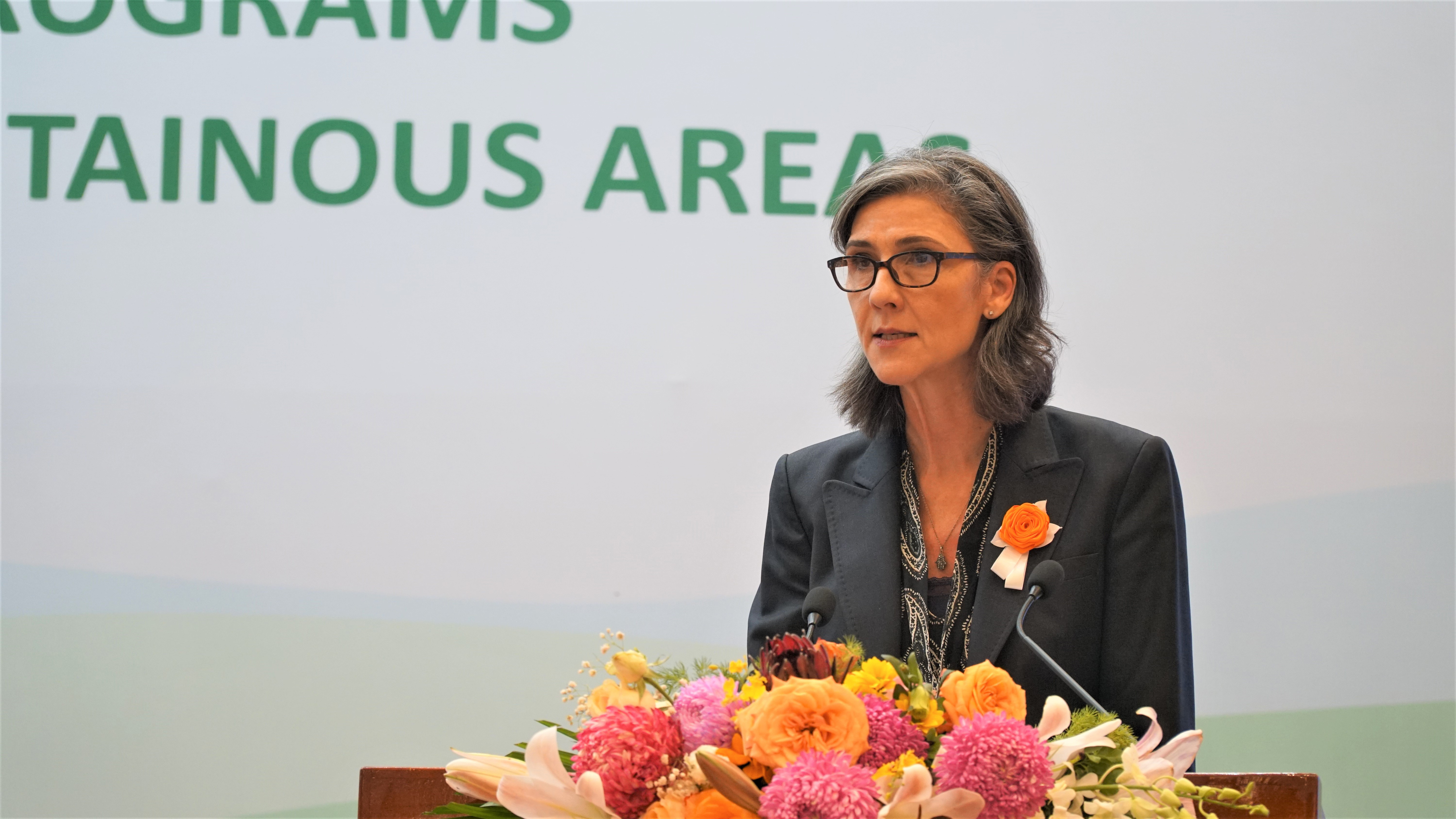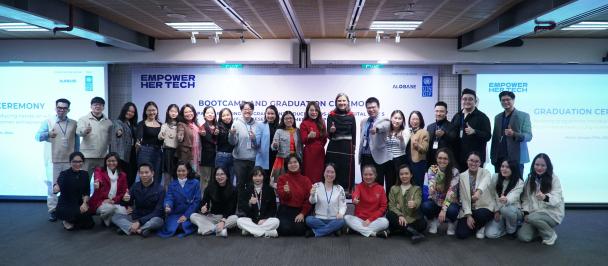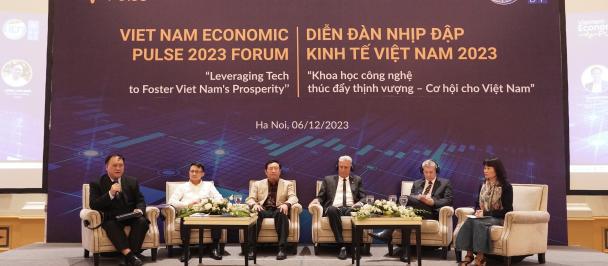UNDP Innovative Solutions for Economic Empowerment of Ethnic Minority Women in Viet Nam
November 23, 2022

Presentation by Ms. Ramla Khalidi, UNDP Resident Representative in Viet Nam, on UNDP innovative solutions for economic empowerment of ethnic minority women in Vietnam.
Mr. Tran Quoc Phuong, Deputy Minister of Planning and Investment;
Mr. Vo Thanh Hung, Deputy Minister of Ministry of Finance;
Ms. Carolyn Turk, Director of the World Bank;
Ms. Pauline Tamesis, Resident Coordinator of UN in Viet Nam;
Distinguished guests and participants at both central and local levels, both in person here and online.
Thank you for the invitation to present at this important event.
By all accounts, Vietnam has made impressive poverty reduction achievements, and has exceeded the targets set in the MDGs. Extreme poverty fell from 49% in 1992 to 5% in 2021. And according to the new multidimensional poverty line, multidimensional poverty today is at just over 9%.
Vietnam pioneered the application of the multidimensional poverty (MDP) measurement in the Asia-Pacific region since 2015, using it for the triple purposes of (i) targeting, (ii) monitoring and (iii) policy formulation and implementation. Recently, the MDP line for the 2021-2025 was adjusted to increase the income dimension, making an additional 10 million people eligible for government support on poverty reduction and social protection. Basic social service dimensions have also shifted gradually from measuring input indicators to outcome indicators. These are important and timely solutions in the context of the Covid pandemic that has pushed millions of vulnerable households back into poverty.
Despite the above achievements, ethnic minority people (EMs) remain in the "pockets of poverty". Poverty remains prevalent in EM and mountainous areas. Comprising only 14.6% of Viet Nam’s population, EM people account for 90% of the country’s extreme poor and 51.2% of multidimensional poor. The average income of EM households reaches only 40-50% of the national average in certain areas.
EM people’s access to basic social services also lags behind the national average. More than 21% of EM people over 15 years of age cannot read and write Vietnamese properly; about 30% of EM students do not enter school at the right age.
Other emerging challenges, such as (1) the slow-down in global economic growth; (2) climate change; (3) the COVID-19 pandemic; (4) an aging population, will all be major barriers to poverty reduction and EM development in Vietnam.
To help address these challenges, UNDP has worked closely with the Committee of Ethnic Minorities Affairs (CEMA), Ministry of Labour - Invalids and Social Affairs (MOLISA) and selected provinces to implement innovative solutions. We would like to highlight two solutions, elaborated in more detail in the Report distributed to you earlier:
The first: strengthening economic empowerment of Ethnic Minority women though application of the 4M solution (Meet - Match – Mentor – Move)
We have tested and replicated the 4M solution in 4 provinces of Bac Kan, Dak Nong, Lao Cai and Son La. This involved the establishment of a network of stakeholders, including local enterprises, local authorities, and technical assistance providers, to support cooperatives led by EM women. We supported EM women recover and expand their productive capacity, businesses, and access to markets by applying new production and business methods and technologies during the height of the pandemic.
As a result, 100 cooperatives led by EM women (in 4 provinces), not only maintained, but increased revenue by at least 30%, with a total of 13,300 EM beneficiaries. The 4M solution has changed the mind-set of EM women, especially the poor, enhanced their position at home and the market and raised incomes. The November update monitoring report shows that 93% of the EM women-led cooperatives supported by UNDP since 2019 are still operating and maintaining revenue growth of over 20%/year.
To illustrate, I’d like to share with you the story of Ms. Vi Thuy Duong – a ‘Nung’ ethnic minority woman in Bac Kan province. With advice from the initiative her cooperative adjusted its products to meet market needs and applied digital devices to adapt to social distancing regulations. The cooperative survived COVID, and expanded its business to support more EM women. She was awarded the title of farmers’ scientist in 2021.
With examples of proof of concept such as this, we are pleased to see key features of the 4M model integrated into the design and guidelines of two government projects under the NTPs.
These include: (1) the creation of networks to connect EM women to economic partners (enterprises, technical service providers), local authorities and markets; (2) provision of support to a group or cooperative of EM including the non-poor and poor, instead of providing direct support to individual poor people; (3) allocation of time-bound funding for technical support in the form of mentoring services to enable EM people to run their business by themselves; and (4) integration of IT in business.
The second solution relates to digital transformation of NTP management and implementation
Taking advantage of IT applications, UNDP collaborated with CEMA to develop a digital manual on NTP implementation. The manual replaces the paper-based system with a digital management system that results in a significant reduction of administrative costs, especially in remote and isolated areas. The digital manual leads to a change in mind-set, approach and procedures for managing and implementing the NTP.
Instead of searching through 364 different documents, any internet connected device, can access the Digital Manual for Program implementation at anytime, anywhere. The manual was launched by CEMA for use at all levels. We expect that the Digital Manual will reduce the administrative burden on CEMA staff.
To build on these achievements, we would like to offer four recommendations to support the effective implementation of the NTPSEDEMA:
First, strengthen collaboration among UNDP, CEMA and interested development partners to scale up innovative solutions, such as (i) the 4M model, and (ii) the anticipatory, adaptive and agile governance (AAA) under the NTPSEDEMA to cope with the challenges of rapidly changing context.
Second, Support a group or cooperative of EM-led businesses rather than direct individual support. Development partners should focus on the provision of technical assistance and policy advice, while the Government/CEMA will use resources from project 3 under the NTPSEDEMA on sustainable agricultural and forestry production to replicate these solutions in 15 other provinces.
Third, establish and operate active learning loops possibly under the EMWG to connect EM people with other stakeholders to share, learn and exchange knowledge. This can help address bottlenecks and help policy makers adjust implementation guidelines and related policies.
And finally, capitalize on IT applications and promote digital transformation in management and implementation of policies and programs for ethnic minority development. UNDP stands ready and to continue our cooperation with CEMA to improve the digital manual on the Program implementation, at the same time, to expand self-registration, verification and management systems for multi-dimensional poverty and scale up the electric-payment system in ethnic minority and mountainous areas.
Thank you very much!
---
Download presentation here: UNDP Presentation on 4M and Digital Manual (English); UNDP Presentation on 4M and Digital Manual (Vietnamese)

 Locations
Locations



